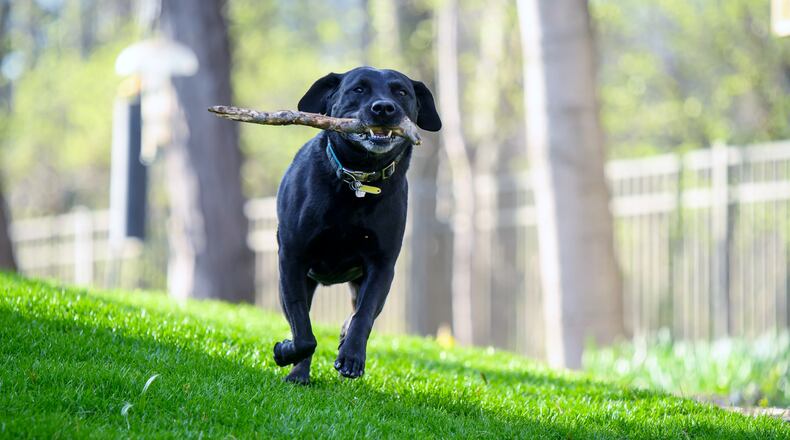“I’m sorry, Big Ted, I haven’t played with you the last few days. But I’m almost done and then we can play.”
I’m not sure what I was expecting. A happy tail wagging, perhaps? A lick of the hand would have been nice.
Teddy responded by turning his gaze away from me.
“Boy, is he mad at me,” I thought.
Stanley Coren writing for moderndog.com says, “Most people can read emotions in their dog quite easily.”
When Ed, my husband of multiple years and I come home from running errands or dinner, Teddy is always waiting at the door coming in from the garage for us. The pooch’s behind is rocking excitedly back and forth and his tail is wagging happily. I know that both of these behaviors are cheerful because I’ve seen these movements for multiple years coordinating with us coming home.
John Gilpatrick writing for petmd.com talked with a number of experts about dog’s emotions. “That’s not even on the table in terms of debate,” said Linda Case, owner of Autumn Gold Consulting and Dog Training Center in Illinois and author of The Science Dog. “Basic emotions like joy, fear, and anxiety — dogs definitely experience them.”
Gilpatrick also spoke with Nannette Morgan, a certified dog trainer and associate certified dog behavior consultant She listed affection, suspicion, excitement, and shyness as common emotions, that dogs have and that their emotional development is comparable to a 2-1/2‑year‑old human child.
So to my concern, was Teddy mad at me because I had been ignoring him the last few days while I was working on a writing project?
From my multiple readings, scientists believe dogs do experience anger but it is usually current. It happens at a specific time. The four-legged fur bags don’t stew about something that happened or try to retaliate.
Teddy may be mad at me now for ignoring him but he hasn’t been simmering about it for days.
Turning back to the keyboard, I couldn’t stop thinking about the pooch lying next to me. Teddy need playtime. The pooch needed exercise. He was bored. He was unhappy.
Hello, guilt.
I closed out my work on the computer and I turned to the lump, “How about a puzzle game?”
The lump didn’t move.
I moved to the kitchen, got the puzzle game and loaded it with kibble. When Teddy heard the kibble bag open he moved to the kitchen, too.
The puzzle game is shaped like a bone. It has ten compartments with lids for kibble. Teddy has to push the lids open with his nose or tongue to extract the kibble.
The pooch loves the game. We play several times then moved on to fetch and Hide and Seek.
I finished up with a tummy rub and ear scratches.
“Do you forgive me, Teddy?” I said softly.
Teddy wagged his tail. I took that as a “yes.”
Realistically, Teddy was happy in the moment. The pooch didn’t let go any long held resentments or anger because I hadn’t been playing with him the last few days. That’s not how dogs are wired. It was my own guilt projecting on to his behaviors.
In general, when it comes to anger, don’t you wish humans could be more like dogs, and live more in the moment? I do.
Karin Spicer is a member of The Dog Writers Association of America and The Cat Writer’s Association. She can be reached at spicerkarin@gmail.com.
The emotions of dogs
- Excitement
- Love
- Shyness
- Joy
- Anger
- Fear
- Disgust
- Contentment
- Distress
About the Author

